Domrémy-la-Pucelle to Châtenois
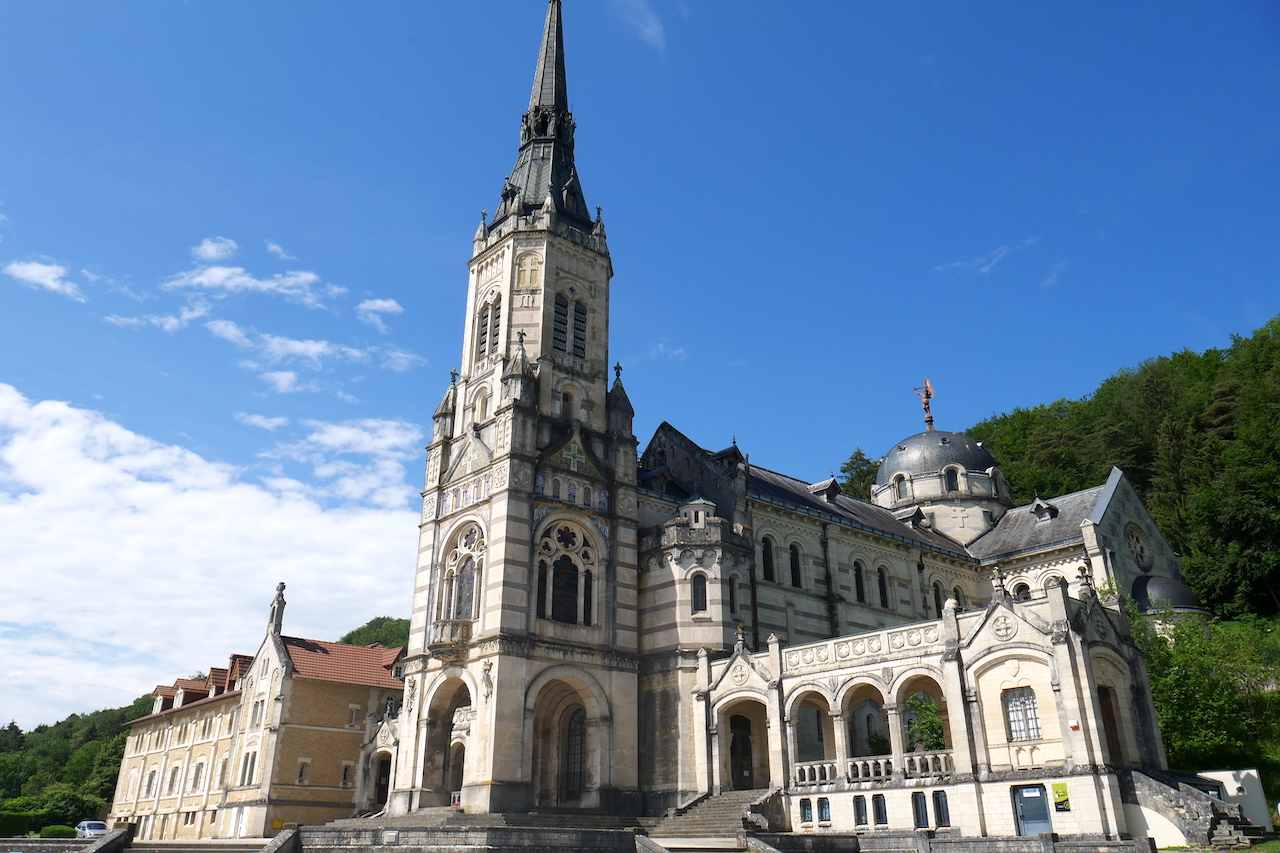
Grand Est
8. Domrémy-la-Pucelle to Châtenois
Difficult
8h
30,7km
+622m
-553m
Step
Embed this item to access it offline
A walk where it is advisable to walk with your eyes on the horizon to discover the local heritage and its castles, its strongholds, its unusual sites such as the sulphurous spring. Leaving the Meuse you will discover the Vosges valleys.
Enjoy the landscapes of the Vair valley which you will dominate at times.
Enjoy the landscapes of the Vair valley which you will dominate at times.
9 points of interest

Église Saint-Rémi à Domrémy-la-Pucelle - Amis saint Colomban TouristSaint-Rémy Church à Domremy-la-Pucelle
The parish church of Saint-Rémy where Joan of Arc was baptized is located in the heart of the village, near her birthplace. The tower, attached to the building to the north, dates from the 13th century.
Listed as a Historic Monument since 1946, it preserves contemporary remains of Joan of Arc: baptismal fonts and sculptures.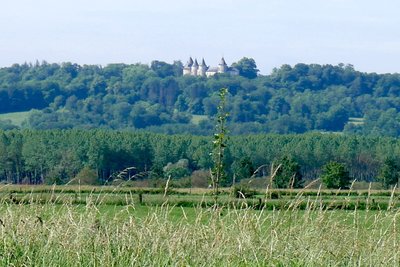
Château de Frebécourt - Amis saint Colomban HistoricalBourlémont Castle at Frebécourt
Before arriving in Coussey you can see the roofs of a vast castle on the hill of the village of Frebécourt. It cannot be visited and only the view from the "Via Columbani" is available.
A first castle was built by the de Bourlémont family in the 12th century, but the present construction dates from the 13th century. It was probably on his return from the Holy Land that Joffroy de Bourlémont (ca. 1210 -1268), seneschal of Navarre of Count Thibaut IV, had the castle of his ancestors rebuilt.
The line was to end in 1412 with his last male descendant, Pierre de Bourlémont, the same year Joffroy was born. The name of his wife, Beatrice, was curiously mentioned in 1456 during the process of rehabilitating the saint. The noble lady and her bridesmaids used to walk under the "tree of the Fairies" in Domrémy, as Jeanne the shepherdess would later do. This detail, held against the Virgin in 1431 by the judges of Rouen, then compared in 1456 with the walks of Beatrice de Bourlémont, would make the latter immortal by clearing Jeanne of the curses previously attributed to the Fairy Tree.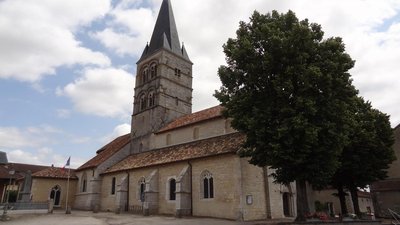
Église Notre-Dame de Coussey - www.justacote.com TouristNotre-Dame Church de Coussey
In Coussey, after crossing the Meuse, you will discover the Romanesque church from the end of the 11th century, with a polygonal choir, one of the most beautiful examples of Romanesque art in the Vosges, and even in Lorraine. In particular, its bell tower, with two floors, highly decorated, is quite remarkable.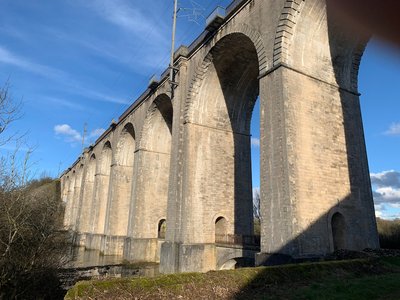
Viaduc sur Le Vair - Amis saint Colomban PanoramicViaduct over the Le Vair
This imposing railway viaduct was built in 1884 for the Culmont Chalindrey-Toul line. 153 m long, it has 10 arches and a pedestrian walkway through the pillars of the arches to cross Le Vair.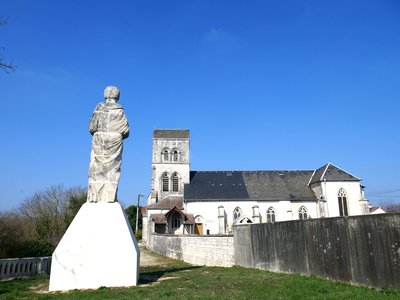
Église Saint-Élophe à Soulosse sous St-Élophe - Amis saint Colomban CulturalSt-Élophe Church in Soulosse-sous-St-Élophe
Saint Élophe between legend and reality.
St-Élophe gave his name to this village. The monk Rupert wrote the life of St. Elophe at the beginning of the 12th century. He was martyred on 16 October 362 on the banks of the river Vair, which flows at the foot of the village of Soulosse. After the chapel was destroyed in late antiquity, the Christians buried his body on the hilltop on the site of the present-day church, which has since borne his name. It became a famous place of pilgrimage from the 10th century onwards.
In 1426, Marguerite de Lorraine, wife of Charles II of Lorraine, had the church of Saint-Elophe rebuilt as it stands today. The lower part of the church is Gothic, with a 12th-century Romanesque bell tower.
Further information: Tourisme Vosges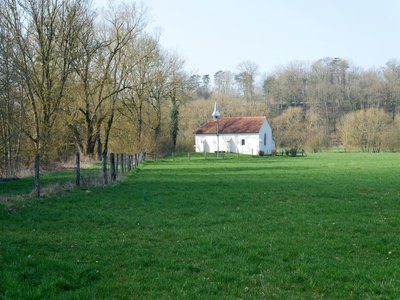
La chapelle Saint-Épéothe à Soulosse-sous-Élophe - Ami saint Colomban CulturalSaint-Épéothe chapel in Soulosse-sous-Élophe
According to tradition, the chapel was built on the site of the martyrdom of Saint Elophe. Rebuilt at the end of the 15th century in honour of the martyred saint, this small chapel was apparently overthrown, along with the town of Soulosse, by the Huns and Vandals in the early years of the 5th century. The interior of the chapel is well worth a visit, with its Gothic cross vaults. The choir features a Gothic window with three-lobed lancets. The altarpiece of Saint Elophe (1614) depicts the judgement and beheading followed by the peregrination of the Saint with his head in his left arm.... Saint Elophe and, next to him, his sister Sainte-Libaire holding the palm of martyrdom.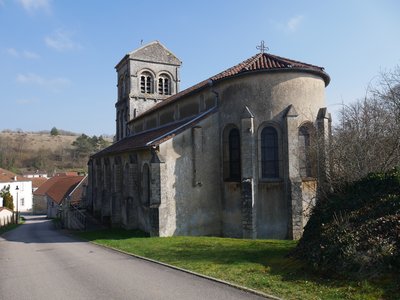
Vue générale de l’église St-Rémy à Rollainville - Amis saint Colomban CulturalSt-Rémy Church in Rollainville
The church in Rollainville, dedicated to Saint-Remy, dates from the 12th century. The east-facing choir and apse, and the bell tower date from the same period. They are listed as Historic Monuments. Take time to admire the sculptures on the bell tower and choir.
In the 19th century, the church was enlarged to extend the nave on the west side and add a west-facing choir. Today, Saint Rémy's church has two choirs, which is quite rare. Inside the church, you can admire the sculpted capitals and the 19th-century stained glass windows.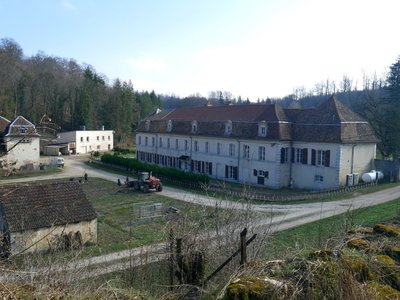
L’abbaye Notre-Dame de l’Étanche - Amis saint Colomban CulturalThe Abbey of Notre-Dame de l'Étanche The Abbey of Notre-Dame de l'Étanche in Rollainville
As you walk along, you'll come across the Abbey of Notre-Dame de l'Étanche (the ponds), which has suffered the ravages of time. An association called "Les Amis de l'abbaye Notre-Dame de l'Étanche" (Friends of Notre-Dame de l'Étanche Abbey) has undertaken major restoration work, partly funded by the Fondation du patrimoine and the Stéphane Bern Mission.
This Cistercian monastery was founded in 1138 by Albéron de Chiny, Bishop of Verdun, who in 1144 entrusted it to Philippe, Abbot of Belval-en-Argonne and member of the Prémontrés Order, who turned it into an abbey.
Sacked in 1632 (some say by evil Swedes, others say by a horde of bloodthirsty Croats), it was abandoned for five years. If we exclude this period, the abbey will have been occupied for 600 years. It was rebuilt between 1743 and 1770, then sold in 1791 and used as a farm, with the small church with its Baroque pediment serving as a barn.
The chapel and convent building were listed as Historic Monuments by decree on 5 December 1984.
The whole complex is privately owned and not open to visitors.
Église Saint-Pierre de Châtenois - Amis saint Colomban TouristSaint-Pierre Church Châtenois
The Romanesque priory church was demolished to make way for the present-day church of St. Peter (1843). It is represented on one of the stained glass windows recalling one of the most important facts of Châtenois' past, the foundation of the Benedictine Priory in 1069 by Edwige de Namur, wife of Gérard d'Alsace, the first Hereditary Duke of Lorraine. It was offered in 1926 by Monsieur le Comte d'Alsace, Prince d'Henin-Lietard.
Pierre-Dié-Malet, painter and sculptor in Nancy designed and drew this stained glass window.
The cross of the old cemetery of the 16th century is located in front of the church. Octagonal stepped truncated cone base. Barrel with Pietà and a 4-niche bossing with Saint Fiacre, Saint Blaise, Saint Stephen and Saint Barbe.
Description
Cross the car park on the left of the church and take the street "rue de la basilique"
- Turn to the left at the crossroads "la côte de la basilique" D53, pass in front of the basilica of Bois Chenu, take the track to the left in front of the farm shed, continue along the Meuse river up to the D3, turn to the left in the direction of Coussey. Make your provisioning in Coussey, no bakery or grocery shop until Châtenois.
- In Coussey take the street "rue du château" at the crossroads in the village, take the street "rue d'Alger" on your left then on your right the street "rue des Verriers".
- At the old Coussey station, turn left to cross the railway line from the bridge over the D3. Continue along the railway line until you reach the old station, then turn left, straight ahead. Carefully cross the D3, take the track which runs alongside the railway, and go under the viaduct.
- At the crossroads with the road, turn right and cross Brancourt following the D3b.
- Leaving Brancourt, take a grassy track on the left going uphill to reach the church of St-Elophe. Go round the church on the left and then along the cemetery. Take the track going down to the St-Élophe fountain, turn left and go to Soulosse, turn right and follow the signs to the St-Épéotte chapel.
- Return on your steps by crossing Soulosse with D674 to take on the right to cross Le Vair to take on the left with the crossroads to take D3 to Fruze to take on the right before the brook then with 80 meters to borrow the footbridge on the left and to continue on your right by following the brook to Rollainville.
- At the entrance of Romainville, take the first street on your right, go past the town hall, turn to the left up to the bridge over the brook, turn to the right before the brook and follow the track up to the farm of L'Étanche, for 1900 metres, then turn to the left to go past the former abbey of L'Étanche.
- After 800 metres, at the crossroads, turn left onto the tarmac road. After 800 metres, at the crow's feet, turn right and continue straight ahead on the forest track for 4,300 metres.
- Leave the forest track and turn right onto the undergrowth path. At the crossroads, turn left and do not go down.
- Once you have passed the first forest road, turn right at the second road, which descends steeply to take the D27 on the right. Enter Châtenois, turn right into rue de la Distillerie, then rue du Breuil, and go up to the church.
- Departure : Saint-Rémi Church, 2 Rue Principale, 88630 Domrémy-la-Pucelle
- Arrival : Saint-Pierre Church de Châtenois, 8 rue du Paradis, 88170 Châtenois
- Towns crossed : Grand Est
Altimetric profile
Report a problem or an error
If you have found an error on this page or if you have noticed any problems during your hike, please report them to us here:







